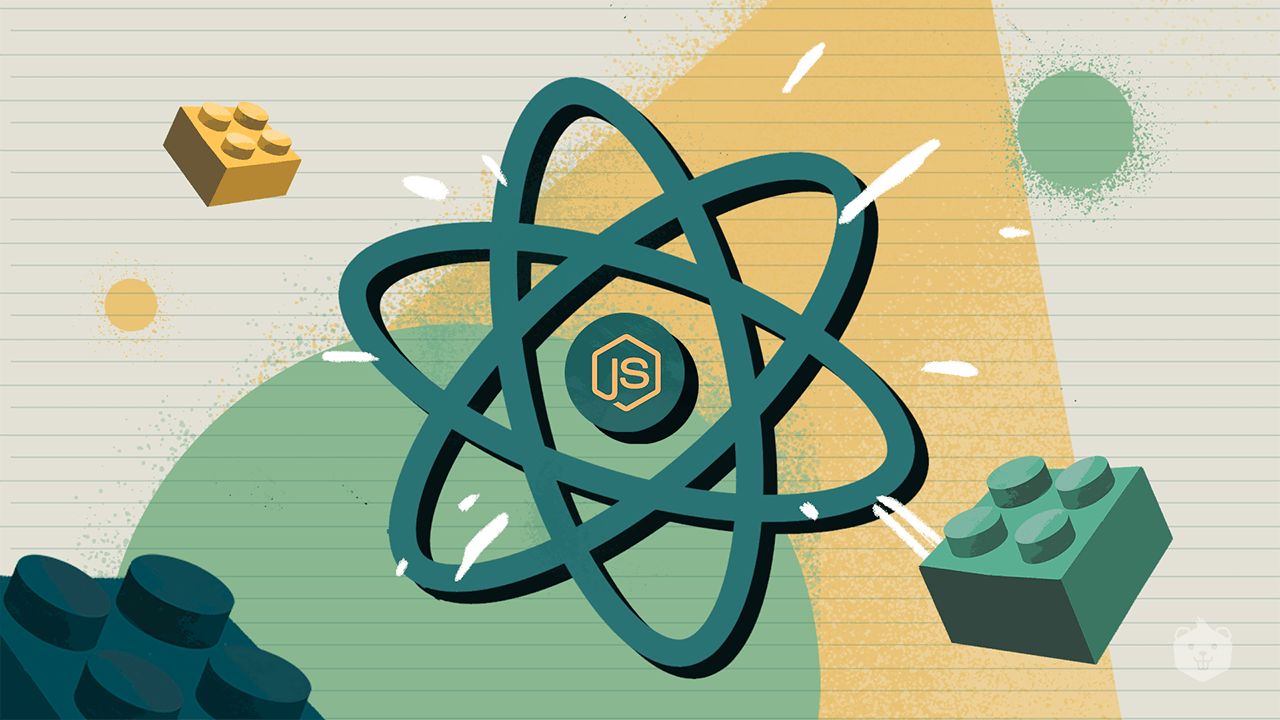Introduction
As the job market becomes increasingly competitive, it is essential to have a resume that stands out from the rest. When it comes to showcasing your skills in the field of machine learning, including relevant projects in your resume can make a significant impact on potential employers.
Machine learning projects demonstrate your practical knowledge and expertise in applying algorithms and models to solve real-world problems. These projects showcase your ability to analyze data, develop innovative solutions, and effectively implement machine learning techniques.
By including machine learning projects in your resume, you provide concrete evidence of your skills and capabilities. Hiring managers often look for candidates who can demonstrate their proficiency through practical applications, and including machine learning projects can help you differentiate yourself from other applicants.
In addition to demonstrating your technical skills, machine learning projects can also highlight your problem-solving abilities, teamwork, and communication skills. These projects usually involve collaboration with other team members, data analysis, experimentation, and presenting findings to stakeholders. Including machine learning projects in your resume gives you the opportunity to showcase your versatility and showcase your ability to work effectively in a team setting.
Machine learning projects can be diverse, ranging from predictive analytics to natural language processing, computer vision, recommendation systems, and more. The key is to choose projects that align with your interests, demonstrate your strengths, and reflect the skills that are relevant to your target job.
In the following sections, we will explore the importance of including machine learning projects on your resume, discuss how to choose the right projects, provide tips on formatting and presenting these projects, and offer sample project descriptions to help you effectively showcase your machine learning expertise on your resume.
Why Should You Include Machine Learning Projects in Your Resume?
In today’s competitive job market, simply listing your academic qualifications and technical skills may not be enough to impress potential employers. Including machine learning projects in your resume can give you a distinct advantage by showcasing your practical experience and highlighting your ability to apply machine learning techniques to real-world problems.
Here are a few reasons why you should consider including machine learning projects in your resume:
- Validation of Skills: Listing machine learning projects on your resume provides tangible evidence of your expertise. It validates the skills you claim to have and shows that you have hands-on experience working with data, algorithms, and models. Employers often value practical experience over theoretical knowledge, and including machine learning projects demonstrates that you can apply your skills effectively.
- Showcasing Problem-Solving Abilities: Machine learning projects require you to identify, analyze, and solve complex problems. By including these projects in your resume, you demonstrate your ability to tackle challenges head-on and develop innovative solutions. It shows employers that you can think critically, work through obstacles, and bring value to their organization.
- Demonstration of Collaboration Skills: Machine learning projects often involve teamwork and collaboration with other professionals, such as data scientists, engineers, and domain experts. Including collaborative projects in your resume highlights your ability to work effectively in a team setting, communicate ideas, and contribute to the success of a project. This can be particularly valuable for employers seeking candidates who can collaborate and function well within their existing teams.
- Highlighting Innovation: Machine learning projects provide an opportunity to showcase your creativity and ability to develop cutting-edge solutions. Employers are often looking for candidates who can bring fresh ideas and approaches to their organization. By including innovative machine learning projects in your resume, you can capture the attention of hiring managers and demonstrate your potential to drive innovation within their company.
- Standing Out from the Competition: In a competitive job market, it is crucial to differentiate yourself from other candidates. Including machine learning projects in your resume sets you apart by demonstrating your practical skills and real-world experience. This can make your resume more memorable and increase your chances of securing an interview or job offer.
By including machine learning projects in your resume, you provide recruiters and hiring managers with concrete examples of your capabilities. It allows them to assess your skills and understand how you can contribute to their organization’s success. So, whether you are a seasoned professional or just starting your career in machine learning, showcasing your projects can make a significant difference in how employers perceive your qualifications and potential.
How to Choose the Right Machine Learning Projects for Your Resume?
When it comes to selecting machine learning projects to include in your resume, it is essential to choose projects that align with your career goals, showcase your skills, and demonstrate your ability to solve real-world problems. Here are some tips to help you choose the right machine learning projects for your resume:
- Relevance: Consider the relevance of the project to the job or industry you’re targeting. Choose projects that align with the specific skills and technologies sought by potential employers. This will show that you have the expertise and experience needed for the role you’re applying for.
- Complexity: Look for projects that demonstrate your ability to handle complex machine learning problems. Employers value candidates who can tackle challenging tasks and find innovative solutions. Choosing projects that showcase your ability to work with large datasets, implement advanced algorithms, or solve unique problems can make a strong impression.
- Diversity: Include a variety of machine learning projects to showcase your versatility. Having projects in different domains or applications can demonstrate your adaptability and ability to apply machine learning techniques to different problem areas. This can be particularly valuable if you are targeting positions in interdisciplinary fields or diverse industries.
- Impact: Consider the impact and outcomes of the projects you have worked on. Highlight projects that have had a tangible impact, such as improved business processes, increased accuracy in predictions, or cost savings. Being able to quantify the results of your projects can make a compelling case for your skills and contributions.
- Collaboration: Include projects that involved collaboration with other team members or stakeholders. This demonstrates your ability to work effectively in a team setting, communicate ideas, and coordinate efforts to achieve project goals. Showcase your role in the project and the specific contributions you made.
When listing machine learning projects on your resume, provide a brief description of each project, highlighting the problem you solved, the methods and techniques you used, the data you worked with, and the results or impact achieved. Be concise yet informative, focusing on the key details that demonstrate your skills and experience.
Remember, the goal is to showcase your expertise and differentiate yourself from other candidates. Choose machine learning projects that not only highlight your technical skills but also reflect your problem-solving abilities, adaptability, and collaboration skills. By selecting the right projects, you can create a compelling resume that catches the attention of potential employers and increases your chances of landing the job you desire.
How to Format and Present Machine Learning Projects on Your Resume?
Once you have chosen the right machine learning projects to include on your resume, it is important to format and present them effectively to grab the attention of potential employers. Here are some tips to help you format and present your machine learning projects on your resume:
- Consistent Structure: Maintain a consistent structure throughout your resume when listing your machine learning projects. Use bullet points or subheadings to clearly separate each project and make them easy to read.
- Project Title: Begin each machine learning project with a clear and concise title that reflects the main focus or objective of the project. This helps employers quickly understand what the project is about.
- Project Description: Provide a brief description of each machine learning project, highlighting the problem you tackled, the techniques and algorithms you used, and the tools or technologies you employed. Emphasize the impact or outcomes of the project, such as improved accuracy, cost savings, or any other measurable results.
- Key Achievements: Include the key achievements or milestones you reached during each project. This could be meeting specific performance metrics, developing a novel solution, or overcoming significant challenges. Highlighting these achievements demonstrates your abilities and shows employers the value you can bring to their organization.
- Data Sources: Mention the sources of data you used for each project. This could include publicly available datasets, proprietary data, or data collected specifically for the project. Including this information gives employers insights into the complexity and relevance of the project.
- Technical Skills: Clearly state the technical skills you utilized in each project. This could include programming languages, libraries or frameworks, data preprocessing techniques, machine learning algorithms, or visualization tools. Highlighting these skills helps employers understand your proficiency in specific technologies and techniques.
- Provide Metrics: Whenever possible, quantify the impact or results of your machine learning project. This could be accuracy percentages, reduction in processing time, cost savings, or other relevant metrics. Providing these metrics adds credibility to your project description and showcases your ability to achieve measurable outcomes.
- Order of Listing: Consider the order in which you list your machine learning projects. If you have multiple projects, prioritize them based on relevance and impact. Place the most relevant and impactful projects at the beginning of the list to capture the attention of employers.
Keep in mind that while it is essential to highlight your machine learning projects, do not overload your resume with too many details. Be concise, focus on the most important aspects of each project, and use bullet points to make the information easily scannable.
By formatting and presenting your machine learning projects effectively, you can ensure that potential employers quickly grasp the value and impact of your work. This will make your resume stand out and increase the likelihood of getting noticed by hiring managers in the competitive job market.
Tips for Effectively Describing Machine Learning Projects on Your Resume
When it comes to describing your machine learning projects on your resume, it is important to effectively communicate your skills, achievements, and the impact of your work to potential employers. Here are some tips to help you describe your machine learning projects in a compelling way:
- Be Concise: Keep your project descriptions concise and to the point. Use clear and specific language to highlight the key aspects of each project without overwhelming the reader with unnecessary details.
- Showcase Achievements: Focus on the achievements and outcomes of your machine learning projects. Mention specific results, improvements, or milestones you achieved during the project. Quantify your achievements whenever possible, such as increased accuracy by a certain percentage or cost savings achieved.
- Highlight Technical Skills: Emphasize the technical skills and tools you utilized in each project. Mention the programming languages, libraries, frameworks, and other technologies you used. This demonstrates your proficiency in these areas and helps employers assess your technical capabilities.
- Explain Project Objectives: Clearly articulate the objectives of each machine learning project. Describe the problem you were trying to solve, the research question being addressed, or the specific goal you aimed to achieve. This provides context to the reader and helps them understand the purpose and relevance of the project.
- Describe the Methodology: Explain the methodology or approach you used in your machine learning projects. Briefly describe the algorithms, models, or techniques you implemented. If you used any innovative or novel methods, highlight them to demonstrate your creative thinking and problem-solving skills.
- Highlight Data Analysis: Emphasize your experience in data analysis and preprocessing. Describe how you cleaned, transformed, and manipulated the data to make it suitable for modeling. Highlight any challenges or unique aspects of the data that you had to address during the project.
- Show Collaboration: If you worked as part of a team during your machine learning projects, highlight your collaboration skills and contributions. Explain how you effectively communicated with team members, collaborated on decision-making, and coordinated efforts to achieve project goals.
- Show Impact and Relevance: Demonstrate the impact and relevance of your machine learning projects. Explain how the project contributed to improved business processes, decision-making, or other relevant outcomes. Connect the project to the industry or field you are applying to, showing its relevance and applicability.
- Tailor Project Descriptions: Customize your project descriptions to align with the requirements and preferences of each potential employer. Research the job description and the company to understand the specific skills and qualities they are seeking. Tailor your project descriptions accordingly to highlight the aspects most relevant to the position.
Remember to proofread your project descriptions for any grammatical errors or formatting inconsistencies. You want your descriptions to be clear, error-free, and well-organized. By effectively describing your machine learning projects, you can effectively convey your skills, accomplishments, and potential value to employers.
Sample Machine Learning Project Descriptions for Resumes
When including machine learning projects on your resume, it is important to provide concise and impactful descriptions that highlight your skills and achievements. Here are some sample machine learning project descriptions to inspire you when showcasing your expertise:
- Predictive Customer Churn Analysis: Developed a predictive model using a Random Forest algorithm to analyze customer churn in a telecommunications company. Leveraged historical customer data, including demographics, usage patterns, and customer support interactions, to predict individuals at risk of churning. Achieved an accuracy of 84% and reduced customer churn by 15% by implementing targeted retention strategies.
- Image Classification for Medical Diagnosis: Implemented a Deep Convolutional Neural Network (CNN) to classify medical images for the early detection of diseases. Trained the model on a dataset of X-ray images and achieved an accuracy of 92% in detecting lung abnormalities. Collaborated with radiologists to fine-tune the model and integrated it into a web application for efficient diagnosis and triage.
- Sentiment Analysis of Social Media Data: Developed a Natural Language Processing (NLP) model to analyze sentiment in Twitter data. Leveraged techniques such as tokenization, word embedding, and LSTM recurrent neural networks to classify tweets as positive, negative, or neutral. Achieved an accuracy of 87% in sentiment classification, enabling businesses to analyze public opinion and make data-driven decisions.
- Recommendation System for E-commerce: Built a collaborative filtering recommendation system for an e-commerce platform. Leveraged user behavior data, including purchase history and user preferences, to provide personalized product recommendations. Improved customer engagement by 20% and increased conversion rates by 10% by suggesting relevant products to users based on their browsing and purchasing patterns.
- Anomaly Detection in Network Traffic: Implemented an unsupervised machine learning model to detect network anomalies. Analyzed network log data and used the Isolation Forest algorithm to identify suspicious activities and potential security breaches. Reduced false positives by 25% and improved detection accuracy by 15% through feature engineering and model optimization.
- Time Series Forecasting for Demand Planning: Developed a time series forecasting model using a Long Short-Term Memory (LSTM) network to predict product demand for a retail company. Trained the model on historical sales data, weather information, and promotional activities to generate accurate demand forecasts. Improved inventory management and reduced stockouts by 30% by optimizing replenishment strategies based on the forecasted demand.
- Automated Fraud Detection in Financial Transactions: Implemented a machine learning model to detect fraudulent transactions in a financial institution. Extracted relevant features from transaction data and used a combination of Random Forest and Gradient Boosting algorithms for classification. Achieved a precision of 95% and reduced false negatives by 20%, resulting in significant cost savings and enhanced security measures.
- Gesture Recognition for Human-Computer Interaction: Designed a gesture recognition system using computer vision techniques to enable gesture-based interaction with electronic devices. Trained a Convolutional Neural Network (CNN) on a dataset of hand gesture images and achieved an accuracy of 92% in recognizing a wide range of gestures. Integrated the system into a smart home environment, allowing users to control devices through intuitive hand movements.
Remember to tailor these project descriptions to reflect your specific contributions, the tools and technologies used, and the impact achieved. By using these sample project descriptions as a framework, you can effectively showcase your machine learning expertise and demonstrate your ability to solve real-world problems.
Conclusion
Incorporating machine learning projects into your resume can greatly enhance your chances of standing out in a competitive job market. These projects allow you to showcase your practical skills, problem-solving abilities, and the impact you can make in the field of machine learning.
By choosing the right projects, formatting them effectively, and providing compelling descriptions, you can effectively highlight your expertise and demonstrate your value to potential employers. Remember to align your projects with your career goals, emphasize relevant achievements, and quantify the results whenever possible. Tailoring your project descriptions to each specific job application will further increase your chances of catching the attention of hiring managers.
Through the sample project descriptions provided, you can gain inspiration and insight into the types of projects that can be included on your resume. Customizing these descriptions to reflect your own contributions and accomplishments will create a more personalized and impactful representation of your machine learning experience.
Don’t forget to proofread your resume thoroughly, ensuring that your machine learning projects are presented clearly and concisely. Avoid jargon and technical terms that may not be familiar to all readers. The goal is to make your projects accessible and compelling to both technical and non-technical individuals.
In conclusion, by effectively showcasing your machine learning projects on your resume, you can differentiate yourself from other candidates, demonstrate your practical skills, and increase your chances of securing the job opportunity you desire. Use your machine learning projects as a powerful tool to highlight your unique abilities and make a lasting impression on potential employers.

























